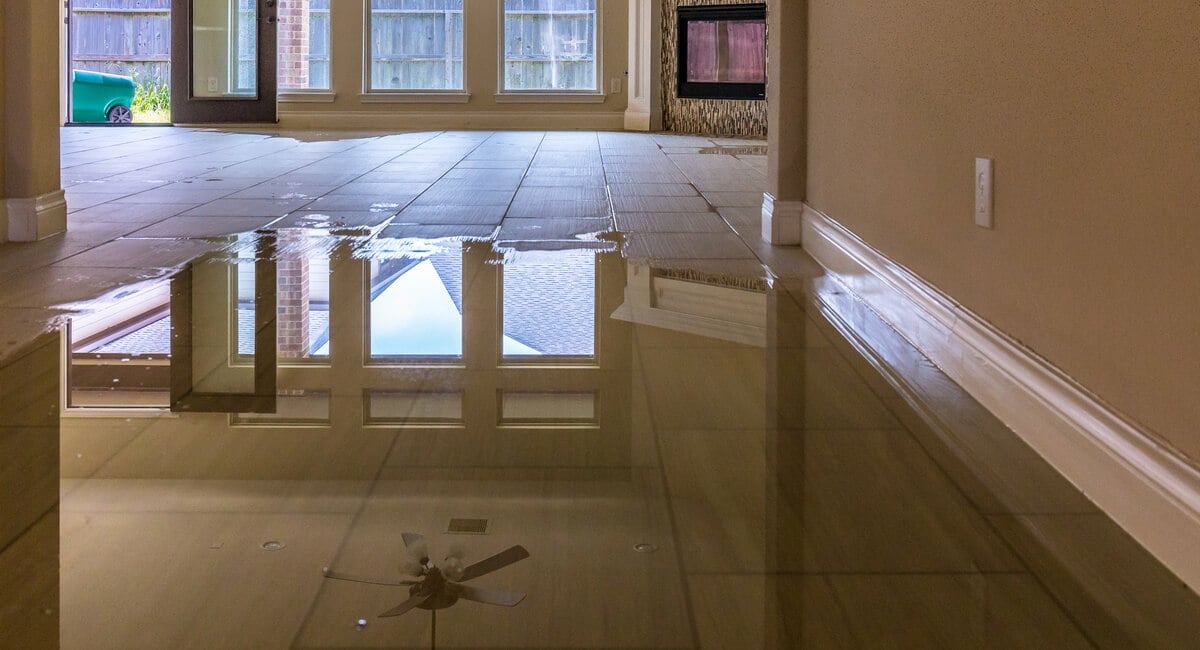An open house is your opportunity to take in as much information about a home as possible. You probably have a list of specific wants and needs that you’re looking for in your new house, but you should never forget to assess the overall condition and safety of the property.
Watching out for common red flags will help you make the most of an open house. With the knowledge you gain from the showing, you can choose to negotiate with the seller or walk away from the opportunity altogether.
Here are eight red flags to look out for when you attend an open house:
1. Strange Odors
A bad or strange odor is one of the easiest red flags to pick up on during an open house. Sometimes, the smell of a home will leave when the sellers move out. In other cases, an unpleasant odor is a sign of more serious problems.
A damp or musty smell could be a sign of a widespread mold issue. Other common odors include cigarettes, animal urine, and dust mites. Keep an eye out for other signs of these problems as you tour the home. For example, you should look under area rugs for signs of pet stains and watch out for mold in the kitchen and bathroom.

2. Water Damage
Looking for water damage is especially important if the home is located in an area that’s prone to flooding. If left untreated, water damage can cause wood rot, structural issues, and mold growth. All of these problems can be incredibly expensive to correct.
Here are some signs of water damage you might notice during an open house:
- Stains or discoloration on the walls, floor, or ceiling
- Cracked or peeling paint
- Water bubbles in the ceiling
- Bubbles under the surface of the home’s exterior
- Walls that sink in when you press on them
- Buckling or warped floor
- Musty smell
3. Foggy Windows
Foggy windows are a sign of broken window seals. As the seal ages or fails, the humid air from outside rushes into your home and fogs up the windows. Bad seals can make it more difficult to heat or cool your home, leading to higher utility bills and excess wear and tear on your HVAC system.
Replacing window seals is a fairly quick and easy fix. You could request that the sellers complete the repair before you close on the house, or you could plan to take on the project yourself when you move in. However, poorly sealed windows could be a sign that the home is poorly insulated overall. If the sellers haven’t put in the effort to repair the windows, there could be larger problems that they’re avoiding as well.

4. Signs of Pests
Termites, bed bugs, rodents, roaches, and other critters can put the health and safety of your household at risk and can be very costly to get rid of. No buyer wants to inherit a pest problem, so look out for these signs of an infestation during an open house:
- Small holes in the baseboards
- Small holes in packages or pantry items
- Droppings on the floor
- Rust-colored stains on bedding and furniture
- Soft or rotting wood
- Traps or pesticides around the house
If you ask the seller about a pest infestation, they’re legally required to disclose the information if they’re aware of it. However, sellers could claim that they have no knowledge of an infestation, and proving otherwise can be very difficult.
A traditional home inspection also doesn’t usually cover pest issues. If you have concerns about a pest problem, consider requesting a pest inspection as a contingency in your offer.

5. Foundation Cracks
Foundation work is one of the most costly home repairs you can encounter. Unfortunately, the signs of a failing foundation aren’t always visible during an open house. However, if you see any cracks on the inside or outside of the foundation wall, you should proceed with caution.
You might also notice vertical cracks above windows or doors throughout the house, which can be a sign of foundation problems. Sloping or warped floors and ceilings are red flags, too. If the house has a chimney, check if it’s crooked or cracked. Another common sign of a foundation issue is cabinets or countertops separating from the walls.

6. Grading Problems
Improper grading is one of the most common causes of foundation damage. When the land around a house doesn’t slope correctly away from the property, water will drain toward your home’s foundation.
You may not be able to tell if there’s a minor grading issue around a property, but it’s always a good idea to walk around the perimeter of the home during the open house. If the ground looks like it’s sloping down toward the home, there may be trouble. A soggy lawn or pools of water around the property can also indicate grading and drainage issues.

7. Roof Problems
Although you can’t climb onto the roof to inspect it during an open house, you can look for some visible signs of aging or damage from the ground. Missing shingles are an obvious sign that the roof needs to be repaired or replaced. Curled or cracked shingles also indicate that the roof is getting old.
If you notice multiple layers of shingles on the roof, it could be a sign that the roof has damage that’s been concealed. During the open house, you can ask about the age of the roof and whether the sellers have done any work on it.

8. Signs of a Cover-Up
Looking out for signs of damage or disrepair is important during an open house, but you can also keep an eye out for signs that something is being covered up. If anything seems strange or out of place, trust your instincts. You can always ask the seller’s agent if you have questions or concerns about the condition of the home.
For instance, a strong smell of air freshener might be a sign that the sellers are covering up a bad odor. Fresh paint applied randomly throughout the home could be concealing signs of mold or water damage. Area rugs may be covering up stains on the carpet or scratches on the floor. Sometimes, agents even play music at open houses to block the sounds of loud traffic, creaky floors, or a noisy HVAC system.
Being on the lookout for these red flags will help you make an informed decision after attending an open house. Not all of these problems may be deal-breakers for you, but noticing possible signs of damage will give you more negotiating power as you prepare your offer. If you notice any red flags that are making you re-evaluate your interest in the home, you can always consult with your real estate agent to get their feedback.



